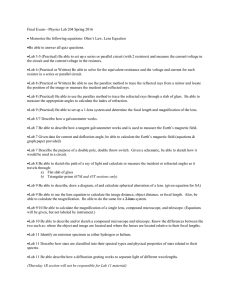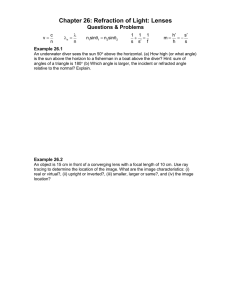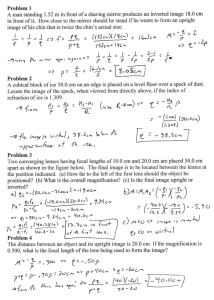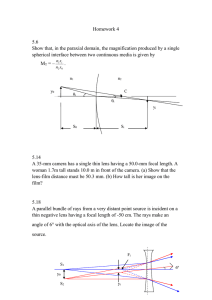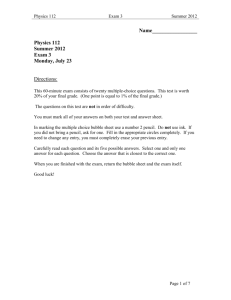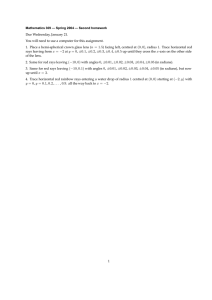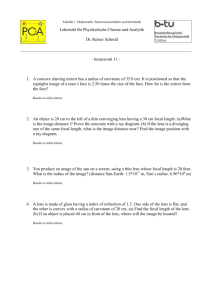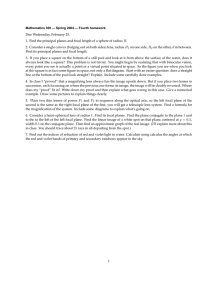Mathematics 309 — Homework due Wednesday, March 5 — Part I
advertisement
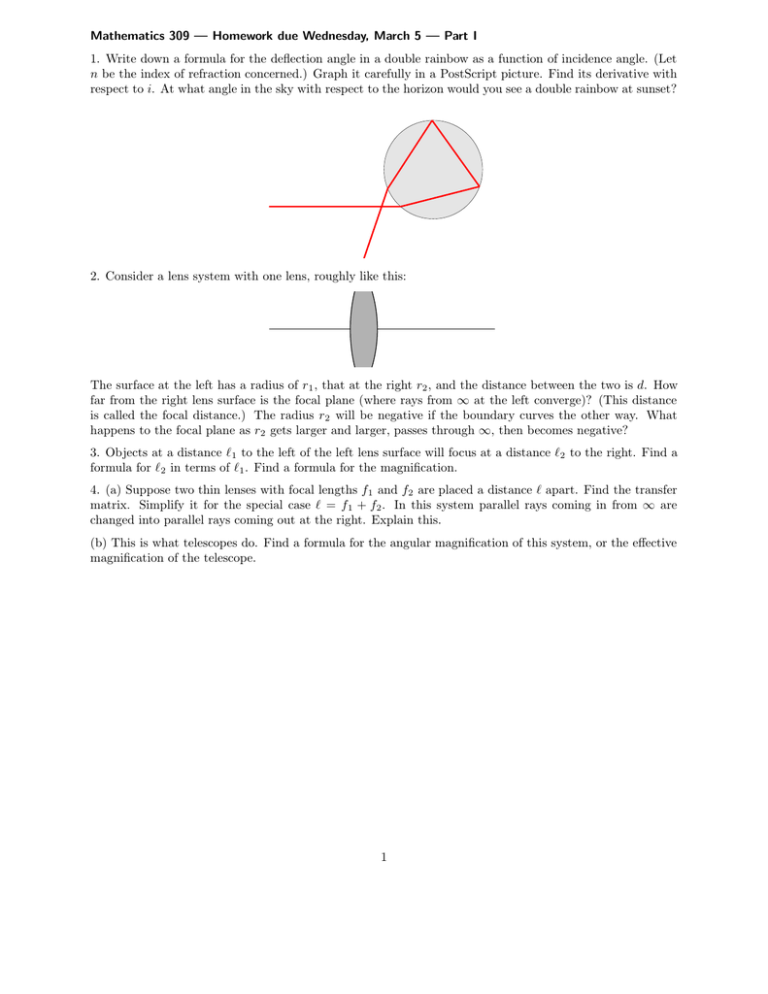
Mathematics 309 — Homework due Wednesday, March 5 — Part I 1. Write down a formula for the deflection angle in a double rainbow as a function of incidence angle. (Let n be the index of refraction concerned.) Graph it carefully in a PostScript picture. Find its derivative with respect to i. At what angle in the sky with respect to the horizon would you see a double rainbow at sunset? 2. Consider a lens system with one lens, roughly like this: The surface at the left has a radius of r1 , that at the right r2 , and the distance between the two is d. How far from the right lens surface is the focal plane (where rays from ∞ at the left converge)? (This distance is called the focal distance.) The radius r2 will be negative if the boundary curves the other way. What happens to the focal plane as r2 gets larger and larger, passes through ∞, then becomes negative? 3. Objects at a distance `1 to the left of the left lens surface will focus at a distance `2 to the right. Find a formula for `2 in terms of `1 . Find a formula for the magnification. 4. (a) Suppose two thin lenses with focal lengths f1 and f2 are placed a distance ` apart. Find the transfer matrix. Simplify it for the special case ` = f 1 + f2 . In this system parallel rays coming in from ∞ are changed into parallel rays coming out at the right. Explain this. (b) This is what telescopes do. Find a formula for the angular magnification of this system, or the effective magnification of the telescope. 1

